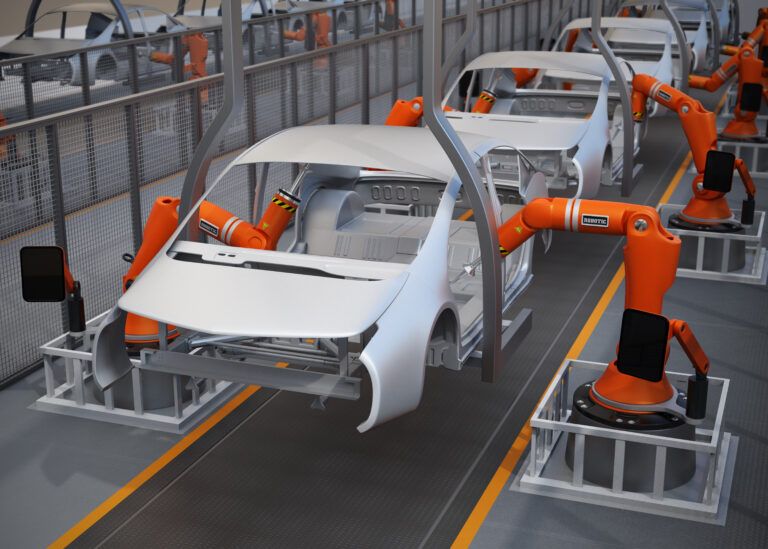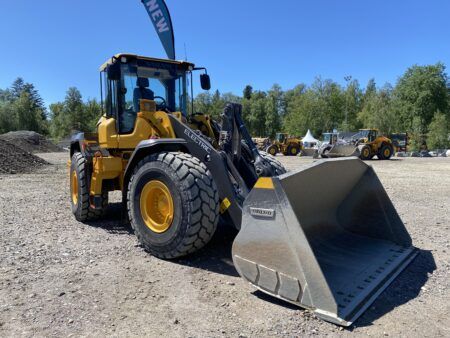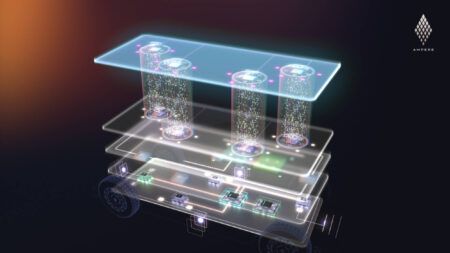A recent report from technology company ABB has highlighted the challenges faced by car manufacturers as the transition to electrified vehicles gathers pace, bringing with it the need to manage huge complexity in assembly and supply chains.
According to Flexing for the Future, a 2035 Global Powertrain Forecast Report sponsored by ABB Robotics and authored by the automotive intelligence unit of Ultima Media, car manufacturers must adopt a more flexible and collaborative approach to their production and logistics infrastructure if they are to maintain profitability and quality into the next decade.
Faced with ambitious targets for mitigating climate change together with huge regional variations in regulations and consumer attitudes, manufacturers are responding by developing platforms and production facilities that accommodate a complex mix of powertrains, from petrol and diesel to hybrid and battery-electric, as well as emerging technologies such as hydrogen fuel cells.
This variability introduces a new level of complexity that extends far beyond the factory walls and throughout the global logistics and supply chains. With conventional ICE powertrains sharing little with their EV successors, the sheer variety of components and processes that must be supported can quickly become unmanageable. Added to which, the speed with which market conditions, government incentives, legislation, and even the underlying technology itself can change means that manufacturers must seek to engineer even greater flexibility into their production facilities if they are to respond to this uncertainty.
The report suggests manufacturers must increasingly turn to digitalization and automation to deliver the flexibility required to manage this variety.
“By unravelling traditional long-line production architectures and deploying dedicated modular cells, manufacturers gain the ability to modify or even replace individual cells without incurring costly production interruptions,” said Joerg Reger, managing director of ABB Robotics’ automotive business. “These zero-loss production changes allow OEMs to start small and scale up key parts of the assembly process by adding or redeploying cells as demands change. By engineering flexibility into the process, we create the means to not just manage this rising complexity, but to turn it into an opportunity.”
One of the most significant technologies in supporting this flexibility is the switch to more autonomous logistics and material handling in plants, the report suggests, with OEMs increasingly relying on Autonomous Mobile Robots (AMRs) to move materials flexibly.
By creating a ‘digital twin’ of the facility, changes can be examined and optimized beforehand, and once a cell’s design has been perfected in the virtual space, it can be quickly rolled-out as a fully validated unit anywhere in the world. Cellular manufacturing also allows robots to be redeployed or moved to areas of high demand with a “lift and shift” process, meaning an asset can extend its life beyond its original purpose.
Key to the success of these initiatives is the need for closer collaboration between a manufacturer and their automation partner. The report outlines that the challenge for many OEMs and Tier-1 suppliers is that their expertise tends to be concentrated in particular product technologies and manufacturing processes. The best way, therefore, to develop solutions quickly is through collaboration with a suitable external partner. Combining the process expertise of the supplier with the automation expertise of an outside company can enable the co-creation of automation solutions in which products are not only ‘designed for manufacture’ but ‘designed for automation’.
That can lead to automation penetrating further into the production process, as evidenced by the growth in robotics use in final trim and assembly, or new technologies such as ABB’s PixelPaint that remove the need for labor-intensive processes that can slow down production.
However, as the report notes, achieving flexible automation is not just a matter of acquiring robots; it requires a completely fresh view of how to maximize manufacturing efficiency in an uncertain and rapidly changing environment.





